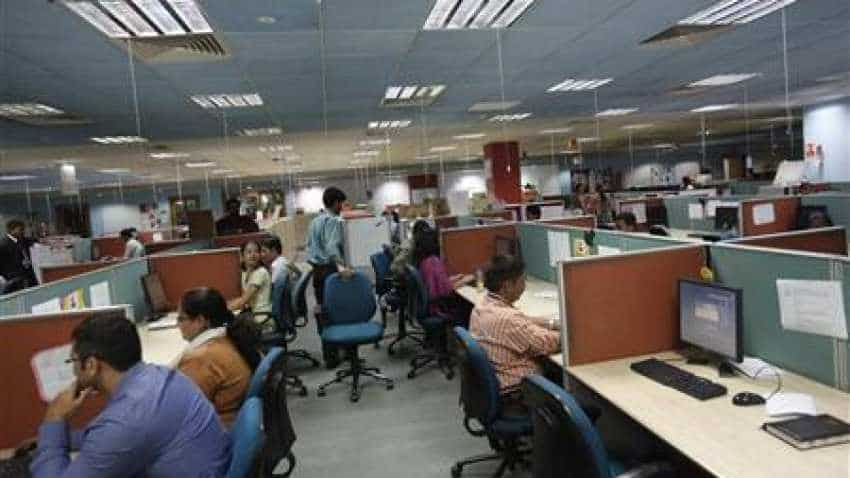Jobs 2018: This is what is slowing down employment growth
Higher government spending, automation and sluggish growth in the real estate sector have been slowing down job growth rate to below economic growth rate in the last few years

Structural changes taking place in the economy are slowly but surely altering the gross domestic product (GDP)-employment ratio as they slow down job creation in comparison to economic growth. HR consultants and economists told DNA Money such a trend had set in and is unlikely to reverse anytime soon.
Anandorup Ghose, partner, Aon Hewitt, cited structural changes such as higher government spending, automation and sluggish growth in the real estate sector as the three main reasons for the drop in the GDP-employment ratio in recent times.
“Earlier, for every percentage improvement in GDP, there was a corresponding improvement in employment. Over a period of time that the ratio of GDP-employment has come down very significantly. This is because a large part of the GDP growth is due to government expenditure, which doesn’t create a large number of (permanent) jobs,” said Ghose.
“The second reason is the substitution of labour with technology is very high. The third factor is that the largest employment generating sector, real estate, is in a very slow phase of growth right now. These are a structural shift and they wouldn’t reverse soon,” he added. A recent study by credit rating agency Care Ratings on employment revealed that the rate of addition of new jobs by the corporate houses last fiscal at 3.8% was below the GDP growth rate of 6.7%. This employment growth rate was also lower than the 4.2% GDP in FY17.
“There has been a moderation in the overall employment growth in FY18 over FY17. However, the employment growth of 3.8% in FY18 for the samples covered has been much slower than the 6.7% economic growth achieved in FY18, reflective of the proposition that higher economic growth is weakly translating into higher job creation,” concluded the Care report, which has been authored by Madan Sabnavis, chief economist, and Sushant Hede, associate economist.
Speaking to DNA Money, Sabnavis said despite the revival in economic growth over the last few quarters, employment generation has not kept pace with it.
“The thump rule is in the best of times, GDP and employment growth rate should be 1:1, whereby if GDP growth is 7.5% then employment growth rate should also be 7.5%. Now, even if the job grows substantially at 3.8% or 4% or 5%, it will still be lower than 7.5%,” he said.
The Care economist added a caveat that corporates were adding a lot of people off the company rolls.
“One caveat here is that many companies do not take people on their roles, which cannot be captured. That trend is increasing a lot. These roles are being treated as admin or miscellaneous expenses. Lots of companies are doing this. This is the only discretionary cost which companies can cut back on when your top line is not growing at an adequate pace,” he said.
Last few years have seen companies struggling to improve their performance in the face of demonetisation and implementation of the Goods and Services Tax (GST).
“There was the initial problem of your output, pricing and so they (companies) were not able to comply with it (GST). Therefore, their sales got affected and their employment also got affected,” said the lead economist of Care Rating.
Ghose alluded to the rise in the temporary workforce taken aboard by companies but said the base of this segment of employees was not “relevant” enough to change the job growth numbers.
“Yes, there is a growth in the temporary workforce but in relative size, it is so small that even if the growth were to be around 50% or 60%, its numbers would still be very small compared to many multiples of percentage growth of fixed employment,” he said.
According to him, India has registered a temporary workforce of around 1-1.5 crore people or even less. He said this was a very small percentage of India’s total population of about 130 crore.
Suchitra Dutta, executive director of Indian Staffing Federation (ISF), said delays in some projects which were to push growth in the infrastructure and manufacturing sectors could have witnessed subdued employment numbers.
“Overall, there are delays in some projects because of which infrastructure and manufacturing were looking like they would pick up some speed. This did not happen. The momentum in the infrastructure is a little slow because (removed ‘of’ here) some of the projects have got delayed,” she said.
Ghose said corporate confidence in the future prospect has been wavering as order books remained stable but capacity utilisation has been hovering at 71-72% over the last 16 quarters. He said new employment generally starts once a company reaches a comfortable capacity utilisation level.
Watch this Zee Business video
“There is still so much underutilised capacity that new capacity will come in only later. Capacity utilisation means employment is being stabilised. Generally, when it starts crossing 80-85%, new employment starts,” said the HR expert.
Source: DNA Money
Get Latest Business News, Stock Market Updates and Videos; Check your tax outgo through Income Tax Calculator and save money through our Personal Finance coverage. Check Business Breaking News Live on Zee Business Twitter and Facebook. Subscribe on YouTube.
RECOMMENDED STORIES

Power of Compounding: In how many years, investors can achieve Rs 6.5 cr corpus with monthly salaries of Rs 20,000, Rs 25,000, and Rs 30,000?

SBI Guaranteed Return Scheme: Know how much maturity amount you will get on Rs 2 lakh, 3 lakh, and Rs 4 lakh investments under Amrit Vrishti FD scheme

Top 7 Sectoral Mutual Funds With Best SIP Returns in 1 Year: No. 1 scheme has converted Rs 34,567 monthly SIP investment into Rs 5,40,565; know about others

SBI 400-day FD vs Bank of India 400-day FD: Where will investors get higher returns on investments of Rs 4,54,545 and Rs 6,56,565?
10:39 AM IST










 Ghosting crisis at companies: Selected candidate not joining is HR's nightmare
Ghosting crisis at companies: Selected candidate not joining is HR's nightmare More jobs on the cards: Artificial Intelligence to create new jobs, says report
More jobs on the cards: Artificial Intelligence to create new jobs, says report Jobs 2018: All 8,000 candidates fail exam for accountant’s posts in Goa
Jobs 2018: All 8,000 candidates fail exam for accountant’s posts in Goa Jobs 2018: Applications invited in Rajasthan Police Recruitment drive for jail prahari; check jailprahariraj2018.in
Jobs 2018: Applications invited in Rajasthan Police Recruitment drive for jail prahari; check jailprahariraj2018.in